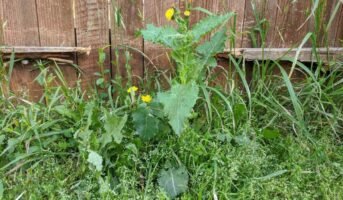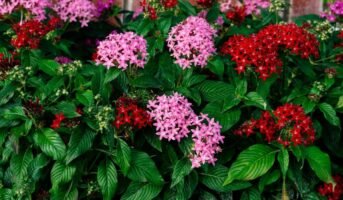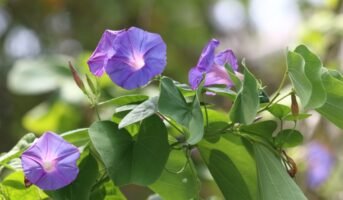Millettia pinnata is a species of small tree belonging to the pea family. This pea family is known by the name Fabaceae. The tree has its origin in Asia, Australia, and the Pacific islands. Millettia pinnata is often known as Pongamia pinnata, and both are the same plant. Among its other common names are Indian beech and Pongame oiltree. you need to add compost for fertilisation.
See also: All about Dracaena fragrans or the corn plant

Source: Pinterest
Millettia pinnata is a legume that can grow to a height of about 50–80 ft. This tree has a fairly large canopy that becomes bushy as it matures. Sometimes the tree can become deciduous for shorter periods. The tree flowers usually after attaining maturity after 3 to 4 years. Flowers appear in small clusters of white, purple, and pink that bloom throughout the year. They are extremely fragrant and grow to be 0.59–0.71 in length. lovely outdoor arrangement in your garden.
Millettia pinnata: Key facts
| Name | Millettia pinnata |
| Common name | Indian beech, Karanja, and Pongame oiltree |
| Type | Legume tree |
| Origin | Asia, Australia, Pacific Islands |
| Indoor/Outdoor | Outdoor |
| Soil | Any soil |
| Temperature | 1°C to 38°C. |
| Water | Plenty |
| Sunlight | Full sun |
| Height | 50–80 ft |
Millettia pinnata: Growing tips
- Depending on the region, it grows in areas with a mean annual temperature range of 1 – 16°C, up to a maximum of 27 – 38°C along with a mean annual rainfall range of 500 – 2,500 mm with a dry season between 2 and 6 months.
- This plant grows well in well-drained loamy soil with assured moisture, but it also grows on sandy soils and clayey soils.
- It cannot tolerate dry sand, nor does it tolerate salinity, alkalinity, or waterlogging.
- In addition to growing well in full sun, it also tolerates shade from other trees.
- Growing plants in soils with a pH higher than 7.5 causes them to become nutrient deficient.
- In order for seeds to germinate, the pods must decay before they open naturally, which occurs between 5 and 7 years of age.
See also: Gardening ideas and tips for beginners
Millettia pinnata: Care tips
Millettia pinnata majorly grows in tropical climates. It needs moderate temperatures that range from 1°C to 38°C. It is intolerant to frost but can be considered a hardy plant. It can be grown at home. However, you should keep in mind that it takes a long time to mature. The best way to grow them would be to plant them directly on the ground. Additionally, you need to add compost for fertilisation.

Source: Pinterest
Millettia pinnata will grow best in full sunlight, so avoid planting it around bigger trees. Additionally, you need to water it regularly until the plant rises to a height of 3 feet. Make sure the potting mix or soil you use is well drained, and there is no water logging issue.
Millettia pinnata: Benefits
Unbeknownst to many, Millettia pinnata has the power to heal and cure diseases. It has been used in ancient Ayurveda to make the cure for a variety of illnesses. It has antibacterial and anti-inflammation properties that can help deal with sudden illnesses like coughs and colds, and bacterial infections.

Source: Pinterest
Here is a list of medical benefits that are associated with Millettia pinnata or Karanji:-
Improves digestive power
Karanja or Millettia pinnata has laxative properties that can help clear the stomach. It has been used as a cure for constipation as it helps and to improve gut motility in general. It has astringent and anti-inflammatory properties that can help deal with haemorrhoids and other gut problems.
Has healing powers
In Ayurveda, Karanja oil is highly useful for curing skin infections and problems like boils and acne. It can help patients deal with eczema and reduce itching. The plant also has antibacterial properties that make it a great product for healing wounds. It prevents the spread of infection and aids in promoting the regeneration of skin cells in wounded areas.
Manages indigestion
Karanja or Millettia pinnata can be used to manage indigestion. In Ayurveda, indigestion is caused by an aggravated Kapha that causes Agnimandya. Karanja is said to have Agni (digestive fire) due to its Ushna (hot) potency and digests food easily. Since it has laxative properties, it can aid in improving the overall performance of the digestive system.
Improves Appetite
Millettia pinnata can aid in improving appetite. It is used in ayurvedic medicines to balance the insufficient secretion of gastric juice. Since Karanja improves digestion, it also helps increase appetite. This function of the plant makes it great for people who are malnourished.
Cures arthritis
Karanja or Millettia pinnata has anti-inflammatory properties that can be beneficial in dealing with arthritis. It can reduce swelling of joints and relieve pain that is associated with arthritis.
Cures cough and cold
Karanja has astringent properties, according to Ayurveda. Therefore, it can cure coughs and colds and boost immunity. Additionally, the anti-inflammatory properties of the plant help reduce the swelling of the throat and nose that are associated with cough and cold.
What is a Pongamia pinnata?
Pongamia pinnata is a fast-growing, deciduous tree that grows up to 20 metres in height. Pongamia pinnata or Millettia pinnata, is also referred to as malapari or karanja tree in India. The tree produces small clusters of white, purple or pink flowers, which mature into brown seed pods.
How many species are in the genus Millettia?
The Millettia genus belongs to the Fabaceae family, which includes about 150 to 200 species distributed across tropical and subtropical regions of the world.
Is Pongamia the same as Millettia?
Millettia pinnata is often referred to as Pongamia pinnata.
What is the scientific name of Millettia pinnata?
Millettia pinnata is the scientific name of the legume tree belonging to the pea family Fabaceae. Tracheophytes is the scientific name of the group Millettia pinnata belongs.
FAQs
What are the medicinal uses of Millettia pinnata?
Millettia pinnata is highly useful for curing a variety of diseases. It can be used to deal with stomach problems, arthritis, and skin infections.
Is Millettia pinnata poisonous?
Millettia pinnata is poisonous to herbivorous animals. Humans can consume Millettia pinnata after it has been properly processed.
How do you grow Millettia pinnata?
Millettia pinnata can be grown in loamy and nutrient-rich soil. Additionally, it will grow best in full sunlight and water on alternative days.
Housing News Desk is the news desk of leading online real estate portal, Housing.com. Housing News Desk focuses on a variety of topics such as real estate laws, taxes, current news, property trends, home loans, rentals, décor, green homes, home improvement, etc. The main objective of the news desk, is to cover the real estate sector from the perspective of providing information that is useful to the end-user.
Facebook: https://www.facebook.com/housing.com/
Twitter: https://twitter.com/Housing
Email: [email protected]











